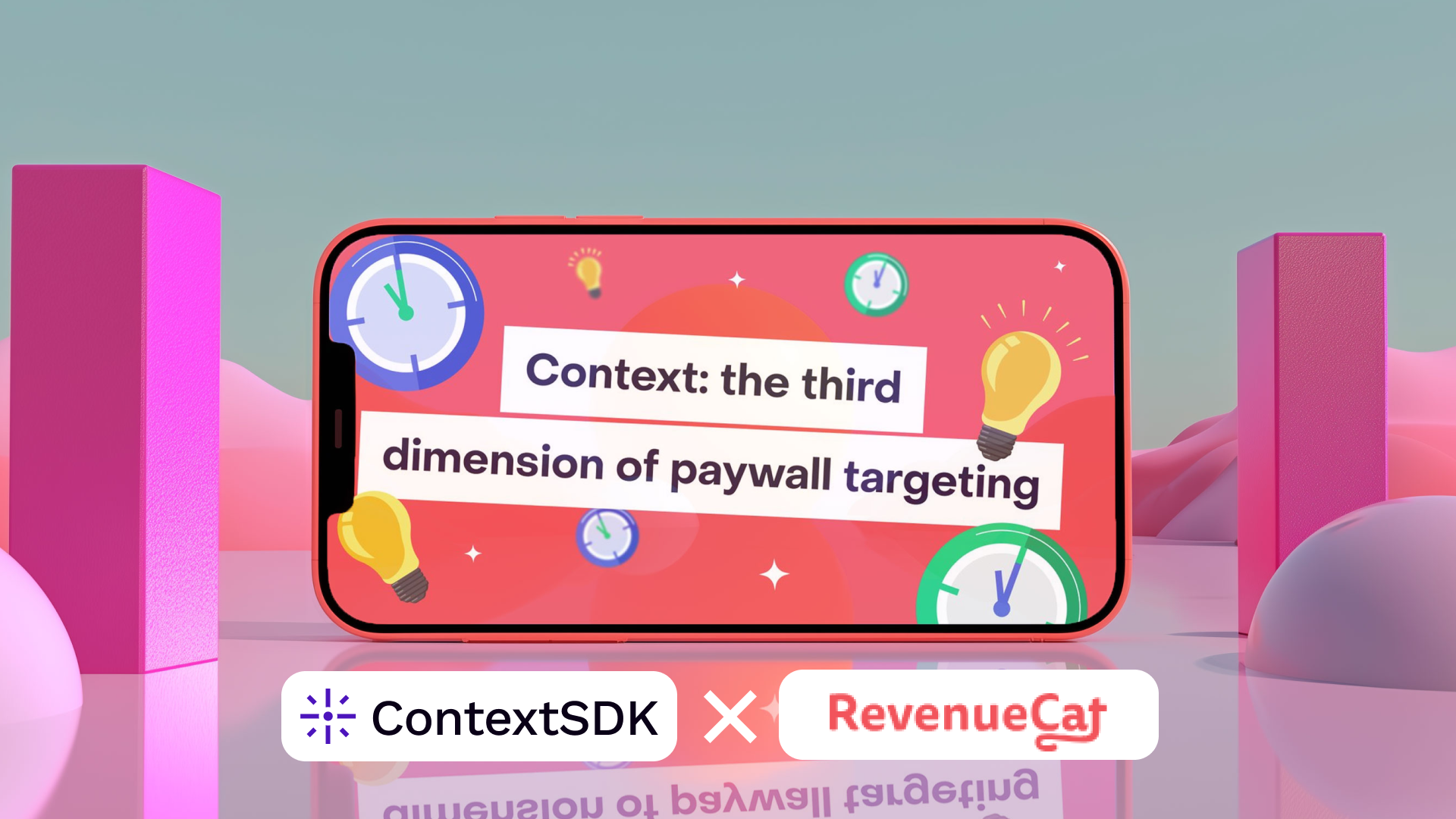
The Problem: We're All Terrible at Explaining "Why"
Imagine this: Your app's engagement drops 30% on Tuesday afternoons. Your team concludes users aren't interested in your content anymore. You redesign the entire onboarding flow, change your notification strategy, maybe even pivot your product features.
Three months later, you discover the real reason: Your users were simply commuting home from work during those hours, with no hands free to engage with your app.
This is biased attribution in action - and it costs businesses millions in misguided decisions every year.
What Is Biased Attribution, Really?
Biased attribution is our human tendency to jump to convenient explanations for behaviors without considering the full picture. We see what happens, but we guess wrong about why it happens.
In mobile apps and digital products, this shows up when we:
- See a metric change
- Make assumptions about the cause
- Build strategies based on those assumptions
- Waste resources solving the wrong problem
The tricky part? These biases feel logical in the moment. They're invisible until someone shows you what you're missing.
The 4 Attribution Biases Sabotaging Your Data
1. Self-Serving Bias: "We're Great, Unless We're Not"
What it is: Taking credit for successes while blaming failures on external factors.
In practice: Your push notification campaign gets a 40% open rate. "Our messaging is brilliant!" you think. Next campaign? 15% open rate. "Must be notification fatigue in the market."
Reality check: Maybe the first campaign went out when users were relaxed at home, and the second hit during their busy commute.
2. Fundamental Attribution Error: "Users Are the Problem"
What it is: Blaming user characteristics while ignoring situational factors.
In practice: "Users aren't engaging because they don't care about our product" vs. "Users aren't engaging because we're interrupting them at the worst possible moments."
This is perhaps the costliest bias for app developers. You end up fixing your product when you should be fixing your timing.
3. Confirmation Bias: "I Knew I Was Right"
What it is: Only paying attention to data that confirms what you already believe.
In practice: You believe younger users prefer evening engagement. You only look at evening data and ignore the morning sessions where engagement is actually higher. You double down on evening strategies and miss major opportunities.
4. Actor-Observer Bias: "It's Different When We Do It"
What it is: Attributing your own actions to circumstances but others' actions to their character.
In practice: When your app's engagement drops: "It's the holiday season, people are busy." When a competitor's engagement drops: "Their product clearly isn't resonating with users anymore."
Why Traditional Analytics Can't Solve This
Standard analytics tools show you what happened - page views, session length, conversion rates. But they can't tell you why.
You see that users dropped off at checkout. But was it because:
- Your checkout flow is confusing?
- They were distracted by something in their environment?
- They were walking and couldn't enter payment details?
- They lost cellular connection?
Without context, you're guessing. And humans are really bad at guessing when biases are involved.
The Missing Piece: Real-World Context
Here's the breakthrough: What if you didn't have to guess? What if you actually knew what users were doing when they engaged (or didn't engage) with your app?
This is where context data changes everything.
Context data means understanding the real-world circumstances surrounding user behavior:
- Are they stationary or moving?
- Are they in a loud or quiet environment?
- What time of day is it for them?
- Are they likely focused or distracted?
- What's their current activity pattern?
With this information, attribution becomes obvious instead of biased.
How ContextSDK Reduces Biased Attribution
ContextSDK solves the attribution problem by giving you the one thing traditional analytics can't: real-world context.
What ContextSDK Does
ContextSDK processes over 300 mobile signals directly on users' devices to understand their real-world situation. This includes motion data, time patterns, battery status, connectivity, and dozens of other contextual indicators.
The key difference? All processing happens on-device using Edge AI. This means:
- Instant insights with no server delays
- Complete privacy (no personal data ever leaves the device)
- Accurate context based on actual behavior, not guesses
How It Reduces Attribution Bias
Let's revisit our earlier scenarios with ContextSDK:
Scenario 1: The Tuesday Afternoon Drop
- Without context: "Users lost interest in our app"
- With ContextSDK: "Users are commuting with high motion signals - they're literally unable to engage"
- Better decision: Shift engagement attempts to when users are stationary
Scenario 2: Poor Notification Performance
- Without context: "Our message wasn't compelling"
- With ContextSDK: "Notifications sent during high-distraction periods (loud environments, active movement)"
- Better decision: Use ContextPush to send notifications when users are in calm, receptive moments
Scenario 3: Low Conversion Rates
- Without context: "Our offer isn't attractive enough"
- With ContextSDK: "We're showing offers when users are rushed or distracted"
- Better decision: Use ContextDecision to present offers during ideal moments, boosting conversions by 60%+
The Two Tools That Make It Happen
ContextDecision: Identifies the perfect moments to show in-app prompts, offers, or requests based on real-world user context. Instead of interrupting users at random times, you engage them when they're actually receptive - increasing conversion rates by over 60%.
ContextPush: Sends push notifications at precisely the right moment based on each user's real-world context. This dramatically improves open rates and reduces opt-outs because you're reaching users when they're available and open to engagement.
Real-World Example: The Fitness App Mystery
A fitness app was seeing declining engagement during afternoon hours. The team's attribution journey:
- Initial bias: "Users aren't motivated enough" → Redesigned motivational messaging
- Second bias: "Our workout content is stale" → Created dozens of new workout videos
- Third bias: "Notification fatigue" → Reduced all notifications
None of it worked. Engagement kept dropping.
With ContextSDK, they discovered the real reason: Users were busy with work during afternoon hours. They weren't unmotivated - they were literally in meetings, commuting, or focused on other tasks.
The fix was simple: Shift engagement prompts to windows when users showed stationary, low-distraction patterns. Engagement recovered within two weeks.
The Privacy-First Difference
Here's what makes ContextSDK different from other analytics solutions: zero personal data collection.
All 300+ signals are processed entirely on the user's device. ContextSDK never sees, collects, or stores:
- Personal identifiable information (PII)
- Location coordinates
- Actual audio or conversation content
- Browsing history or personal data
You get the insights without compromising user privacy or trust.
Getting Started: From Biased to Brilliant
If you're ready to stop guessing and start knowing why users behave the way they do:
- Audit your current assumptions: What explanations are you giving for user behavior? Are they based on data or bias?
- Identify attribution-sensitive decisions: Where are you making strategic choices based on incomplete context?
- Implement context-aware engagement: Start with one use case - notifications or in-app prompts - and add real-world context to your decision-making.
- Measure the difference: Compare context-aware engagement against your traditional approaches.
Conclusion: Context Is the Cure for Bias in Your App
Biased attribution isn't a character flaw - it's a data problem. When you only see part of the picture, your brain fills in the gaps with convenient explanations. Those explanations feel right but lead you astray.
The solution isn't trying harder to be objective. It's getting better data.
By understanding the real-world context behind user behavior, you eliminate the guesswork. You stop attributing engagement drops to user disinterest and start seeing the commute patterns. You stop blaming your product and start optimizing your timing.
That's not just better attribution. That's better business.
Relevant Resources:
- ContextSDK Platform
- Understanding Attribution Bias in Psychology
- The Fundamental Attribution Error
- Essential User Engagement KPIs







